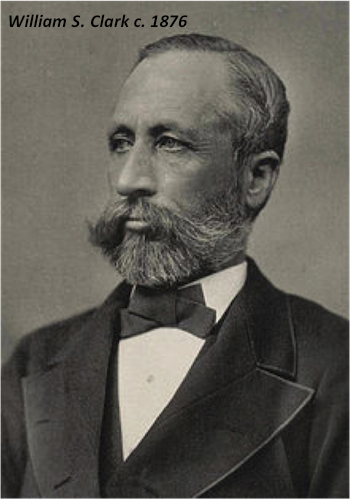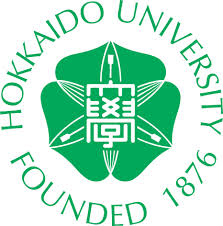THE CONCORD-NANAE CONNECTION Rooted in History
Willam S. Clark
Soon after Admiral Perry opened the doors to Japan in the 1850’s, the new Emperor Meiji instituted a bold plan to westernize and modernize Japan, in part by relying on the expertise of “hired foreigners” (yatoi gaikokujin). Many New Englanders were enlisted to help develop its northernmost island of Hokkaido, including Dr. William Clark, then President of Massachusetts Agricultural College (now the University of Massachusetts in Amherst). In 1876, Dr. Clark went to Hokkaido with three graduate students, including William Wheeler from Concord, to create Sapporo Agricultural College (now Hokkaido University). Their primary mission was to introduce northern agriculture and dairy farming to the region.
![]()

Clark served as president from 1867-1879.

![]()

Built as part of Sapporo Agricultural College in 1877, the “Model Barn” (left) was conceived by Clark, and designed by Wheeler as an archetype for Hokkaido’s future agricultural development.
Both schools became universities in the mid-20th century.
Clark famously shouted these words at the moment of his departure as a final message for his students in Sapporo. The phrase, and the image of Clark, remain famous throughout Japan.
(Statue in Hitsujigaoka Park in Sapporo)
Upon Clark’s return to the United States, William Wheeler took over as the second president of Sapporo Agricultural School. Aside from managing the school, Wheeler utilized his background in civil engineering to make various contributions to Hokkaido’s then nascent infrastructure. Among his many other accomplishments, Wheeler surveyed the railway route from Sapporo to neighboring Otaru, built a meteorological observatory at Sapporo Agricultural College and collected the first scientific weather data in Hokkaido, and created unique designs for barns that would suit Hokkaido’s climate. Wheeler’s achievements were acknowledged by the Emperor with the singular honor of the Fifth Order of the Rising Sun.
William Wheeler c. 1876
Wheeler later in life
Wheeler’s most famous contribution to Japan
It is well documented that Wheeler visited Nanae in order to inspect the town’s agricultural development during his time in Japan. It is suspected that barns in Nanae, such as this one, were built using plans based on Wheeler’s original designs.
In 1843 a man named Ephraim Wales Bull developed a new variety of grape while living in Concord, to which he gave the name “Concord Grape”. According to letters written by Wheeler, he and Clark brought Concord grapes on their trip to Japan, and introduced them to Hokkaido in 1876.
Wheeler was buried in Concord’s famous “Sleepy Hollow Cemetery” alongside other notable residents.
Upon returning from Japan, Wheeler became a major contributor to Concord through his many engineering projects (he was granted around one-hundred patents over the course of his life) and years of public service. He built Concord’s water and sewer systems, including the water works at Sandy Pond, Nashawtuc Hill, Annursnac Hill and Nagog Pond. He was “Concord’s foremost citizen,” serving fifty-one years on Town committees and elected positions such as the Water Commission, School Committee, Board of Health, Light Board, Free Public Library, Town Donations and Moderator. He was also a Trustee of the University of Massachusetts from 1880 to 1929. In addition, he was responsible for bringing to Nashawtuc Hill its uniquely beautiful Japanese trees that were planted at his Concord home, called Maru-Yama Kwan (Round-Hill House) after his time in Hokkaido.

UMass Amherst and Hokkaido University restarted faculty and student exchanges around 1950


Massachusetts and Hokkaido became official sister states in 1990


And after sending their first delegations in 1993, Concord and Nanae officially became sister cities in 1997!


